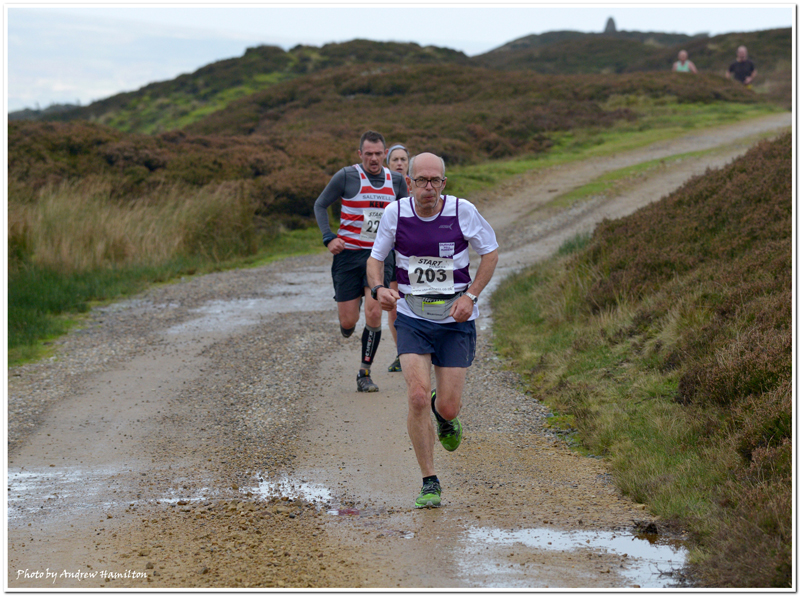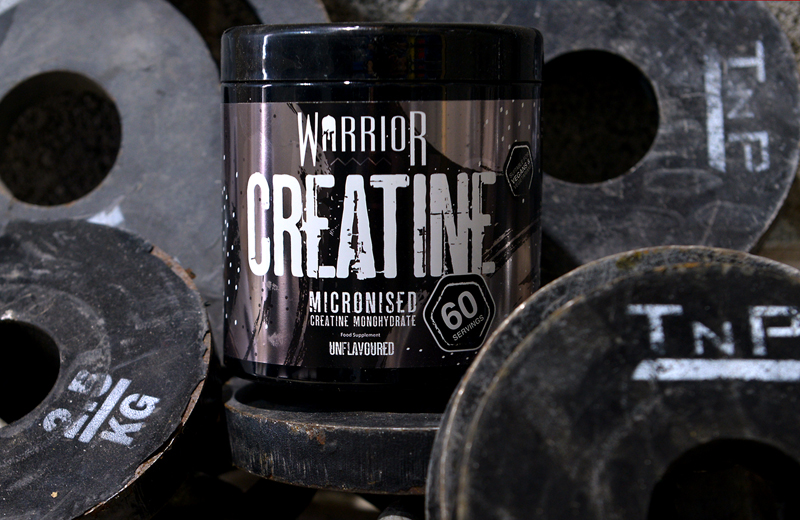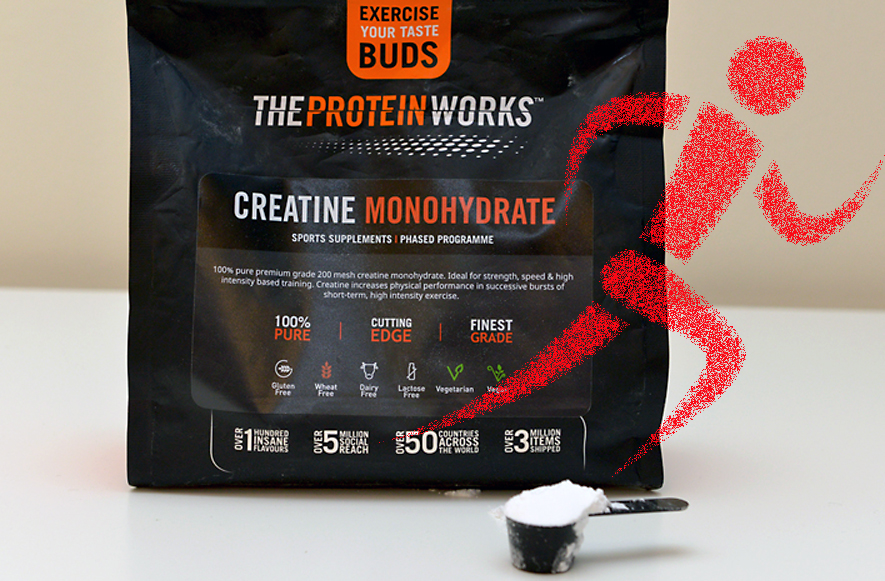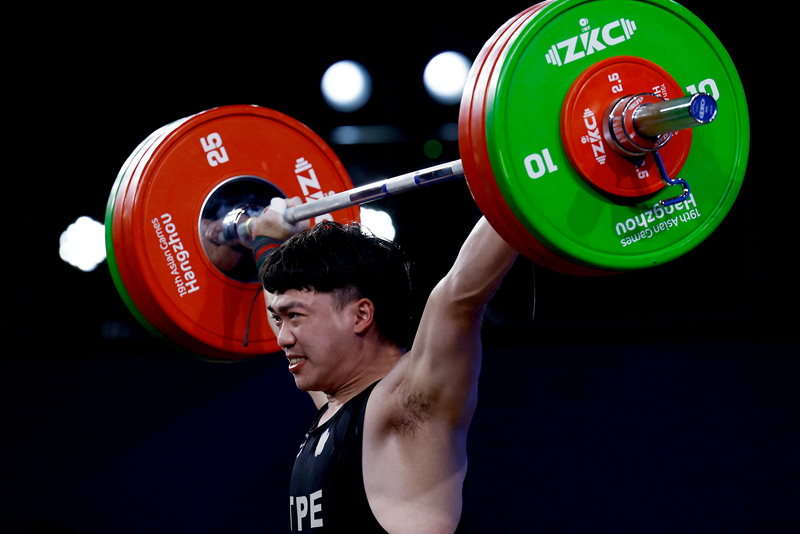You are viewing 1 of your 1 free articles. For unlimited access take a risk-free trial
Collagen: the older athlete’s route to recovery
Andrew Sheaff looks at new research on how collagen supplementation could help minimize muscle damage and accelerate recovery
As athletes age, they experience a number physiological changes that directly impact the ability to compete in and excel at sport. However, while there is a slow decline in performance, what most aging athletes really notice is a decreased ability to recover from exercise. The muscles and joints are stiffer for just a bit longer, and it takes a little longer to bounce back from challenging training sessions. It’s not so much that performance suffers, it’s more a case that extra time is necessary before that performances can be repeated again. If you love to train and challenge yourself, it’s not what you want!
Speeding up recovery
The challenge is how to mitigate these changes so athletes can continue to do what they love at as high a level as possible. There are many strategies that can help to arrest age-related changes in function. All of these strategies aim to enhance recovery, which as stated above, appears to be the most problematic factor as athletes age. The most effective way of course to optimize recovery is through the effective training design, ensuring that intensity, volume, and frequency are controlled in a way to accommodate changing recovery capabilities. When there’s a more judicious application of work, there’s less to recover from.
However, it’s also possible to speed up the recovery process, either through internal or external means. While ‘external’ means of recovery, such as massage, temperature therapy, and other related modalities are the subject of much discussion, it’s the ‘internal’ recovery strategies that are the most effective. Stress management, sleep, and nutrition form the foundation of effective recovery - even more so as athletes age.
Given the food we eat is the fuel for our efforts, knowledgeable athletes have made nutrition the main focus of their recovery efforts. Historically, carbohydrate has been the main focus of recovery nutrition, with an emphasis on replacing the fuel that’s consumed during training. While extremely important, this focus is incomplete; more recently, there’s been an emphasis on the quality, quantity, and timing of protein intake, as recovery nutrition isn’t just about replacing used fuel, but also helping to re-build the muscle fibers that have been damaged during exercise. This additional emphasis has been effective at aiding recovery efforts.
Connective tissue and collagen
However, during strenuous exercise, it’s not just the muscle fibers themselves that can be damaged. All of the connective tissue that surrounds and connects the muscle fibers can sustain damage as well. Unfortunately, the increased focus on dietary protein isn’t as effective at facilitating recovery of these tissues. While muscle fibers and connective tissue are both proteins, they differ significantly in how they are constructed. All proteins are constructed with different combinations of protein building blocks known as amino acids, and the combination of amino acids that produce muscle fibers is quite different from those that produce connective tissue.
What does this have to do with nutrition? The foods we eat are the source of amino acids for the proteins our bodies construct. Most dietary sources of protein are high in the amino acids that are used to build muscle fibers. However, they are typically very low in the amino acids used to build connective tissue, namely glycine, proline, and hydroxyproline. As a result, there’s been a recent surge in interest in collagen supplementation precisely because collagen is an excellent dietary source of these amino acids. From beauty to general health to exercise training, collagen supplementation is getting traction.
Muscle soreness isn’t just the result of damage to the muscle fibers themselves, but also to the surrounding connective tissue. It stands to reason that supplemental dietary collagen should enhance recovery from exercise because it supplies the building blocks for repairing the connective tissue that is often damaged during exercise. It’s a great hypothesis, but does it hold true? If so, what type of dosage is necessary or appropriate? Fortunately, these are questions that researchers are asking, with answers beginning to emerge.
New research
A group of Japanese scientists wanted to understand the impact of a small dose of collagen supplement on markers of muscle damage following intense exercise(1). They recruited 20 middle-aged men to participate in the study. These men were on average 52 years of age, making this study particularly relevant for the older athlete. The subjects took part in a randomized crossover trial. In other words, the subjects acted as their own control. They performed the experimental trial and they performed the control trial.
In the experimental trial, the subjects consumed 10 grams of a collagen supplement, and at a different time, 10 grams of an inert placebo in a second trial. Both trials lasted for 33 days, and the order of the trial for each individual was selected on a randomized basis. All subjects waited 23 days before repeating the experiment. This is a particularly insightful trial design because it accounts for nutrition habits, sleep habits, life stress, and other variables that are otherwise difficult to control. In all cases, these factors were the same for each for both the experimental arm and the control arm because it was the same people.
On the 30th day of supplementation with either collagen or placebo, the subjects performed a vigorous exercises challenge designed to stimulate significant muscle damage. The subjects performed sets of 40 x bodyweight squats, with a 2-second descending phase and a 2-second ascending phase. They took 20-seconds rest between sets and performed up to five sets of the exercise. This was certainly a lot of squats in a short period of time!
The researchers performed several tests to quantify differences in muscle fatigue and muscle damage. They used a spectrum of tests including subjective perceptions, metabolic markers of damage, and measures of functional performance. This allowed the researchers to gain a comprehensive understanding of any differences between the collagen trial and the control trial.
The measures included perceived muscle and perceived fatigue on a 0 (none) to 100 (extreme) scale, assessing how the subjects ‘felt’ about the damage that incurred. The researchers also examined metabolic markers creatine phosphokinase and lactate dehydrogenase, two key indicators of muscle damage. Lastly, performance was measured by assessing range of motion of the hip in flexion, and well as knee extension strength.
What they found
The most important finding was that muscle strength in the collagen trial had recovered to a significantly greater extent after 48 hours compared to the control trial (see figure 1). In the experimental trial, strength was actually higher after 48 hours than it was at baseline. This indicates that performance recovery may happen faster with collagen supplementation compared to no collagen supplementation. Interestingly, subjective markers of muscle soreness and muscle fatigue in the collagen trial were also significantly lower two hours after the exercise bout. While it’s not immediately clear why this would be the case, this could be relevant for athletes performing multiple events or multiple sessions per day. There were no differences in hip range of motion or metabolic markers of damage between the two groups.
Figure 1: Strength recovery with collagen vs. no collagen

Practical applications for athletes
As athletes age, it eventually becomes a battle to maintain performance and continue to perform the activities that bring joy. While adjusting training loads to accommodate the effects of aging is the first and most powerful strategy for doing so, other strategies are effective as well. The big rocks are basic lifestyle strategies such as getting great sleep, ensuring adequate nutrition, and managing stress are key for optimizing recovery as you age. Once those foundational strategies are in place, other approaches can have merit for those looking for more.
For those looking for an extra edge, collagen supplementation is well worth considering. It appears that it can reduce the short-term subjective perception of fatigue and soreness. More importantly, it can assist in the return of muscle strength within a 48-hour period. Who might this research be particularly relevant to?
For those that have to compete multiple times per day, or like to include multiple training sessions per day on occasion, the short-term improvements in subjective measures of fatigue and soreness can improve how one feels during a second exercise bout. As anyone who has performed double training sessions knows, sometimes the second session doesn’t feel so great, and anything that makes the session feel less painful is a welcome addition. When it comes to competing, feeling good is certainly key to performing well, and any small benefit can be worth the effort to attain it.
Athletes that are pushing the performance edge, or struggle to recover from particularly challenging sessions may stand to benefit in particular. Many athletes schedule their hard training sessions 48 to 72 hours apart. Even a small improvement in performance recovery, as indicated in this study, can be impactful as the effects will accumulate over time. It can allow one to perform slightly better during each session or perform at the same level with slightly less stress. The former can lead to better results over the course of a training block, whereas the latter can protect against injury.
Fortunately, the dosage of collagen is relatively low, and many supplements can be sourced inexpensively. Although not directly assessed in this study, gelatin could be used as an even less expensive option, as it contains the same key amino acids as collagen. Remember that these amino acids are likely driving the recovery process, so obtaining them through inexpensive sources should be sufficient.
While collagen supplementation may not be a complete game-changer, it is one more strategy that aging athletes can use to continue to battle with the arrow of time. As there will rarely be magic pills or strategies that can make a major difference in defying aging, the implementation of several small, yet significant strategies becomes key for enhancing recovery and continuing to maintain performance at the desired levels.
References
1. J Int Soc Sports Nutr. 2023 Dec;20(1):2206392. doi: 10.1080/15502783.2023.2206392
Newsletter Sign Up
Testimonials
Dr. Alexandra Fandetti-Robin, Back & Body Chiropractic
Elspeth Cowell MSCh DpodM SRCh HCPC reg
William Hunter, Nuffield Health
Further reading
Newsletter Sign Up
Coaches Testimonials
Dr. Alexandra Fandetti-Robin, Back & Body Chiropractic
Elspeth Cowell MSCh DpodM SRCh HCPC reg
William Hunter, Nuffield Health
Keep up with latest sports science research and apply it to maximize performance
Today you have the chance to join a group of athletes, and sports coaches/trainers who all have something special in common...
They use the latest research to improve performance for themselves and their clients - both athletes and sports teams - with help from global specialists in the fields of sports science, sports medicine and sports psychology.
They do this by reading Sports Performance Bulletin, an easy-to-digest but serious-minded journal dedicated to high performance sports. SPB offers a wealth of information and insight into the latest research, in an easily-accessible and understood format, along with a wealth of practical recommendations.
*includes 3 coaching manuals
Get Inspired
All the latest techniques and approaches
Sports Performance Bulletin helps dedicated endurance athletes improve their performance. Sense-checking the latest sports science research, and sourcing evidence and case studies to support findings, Sports Performance Bulletin turns proven insights into easily digestible practical advice. Supporting athletes, coaches and professionals who wish to ensure their guidance and programmes are kept right up to date and based on credible science.












